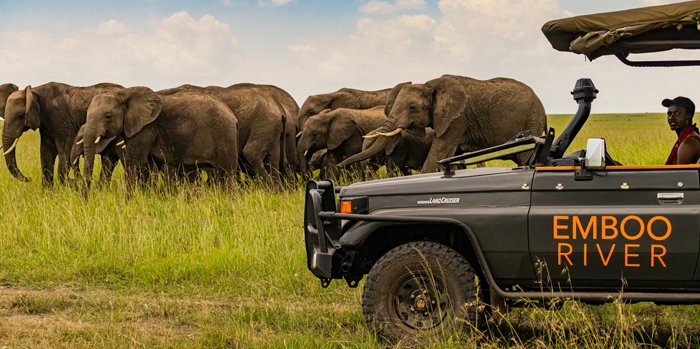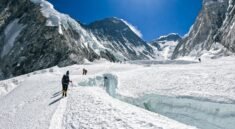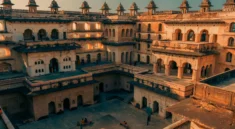
There’s something profoundly humbling about standing still in the heart of the wilderness, where nature’s rhythm continues undisturbed by human presence. The sun rises and sets, the rains come and go, animals live, hunt, and die — all in a timeless flow that’s as ancient as the Earth itself. In these moments, far from concrete jungles and digital distractions, you begin to see clearly: the circle of life is not just a poetic idea. It’s real, raw, and deeply transformative.
To truly see the circle of life up close is to embark on a journey not just through landscapes, but through existence. It is to understand our place in a larger story — one written by wind, carved by rivers, and sung by birds at dawn. It is a journey of awakening, surrender, and belonging.
Into the Wild: Nature’s Stage of Life and Death
Whether you find yourself in the sweeping plains of the Serengeti, the dense jungles of Borneo, the Alaskan wilderness, or the deserts of Namibia, one thing remains constant: life and death are inextricably linked. In the wild, this truth is neither hidden nor sanitized. A lioness takes down a gazelle to feed her cubs. Vultures circle overhead, playing their role in the grand clean-up. A newborn elephant takes its first wobbly steps while predators lurk nearby. This is nature — brutal, beautiful, and honest.
Witnessing these moments changes you. They strip away the illusion of human separation and superiority. You are not above nature — you are part of it. And in that realization lies a powerful sense of humility.
When you spend enough time immersed in nature, you start to feel it. The rhythm. The quiet order. The way everything — from the smallest ant to the tallest tree — has a role. Nothing is wasted. Nothing is without meaning. The cycle of birth, life, decay, and rebirth plays out before your eyes. It is raw. It is real. And it is deeply grounding.
The First Encounter: Awe and Silence
Imagine arriving before sunrise in the Masai Mara. The horizon glows faintly, the sky is tinted with hints of orange and purple. There’s a hush — not silence, but a natural quiet made of wind rustling through grass, distant animal calls, and the soft crunch of tires on dusty ground. Then you see them: a pride of lions sprawled across a termite mound, yawning in the cool morning air.
Your breath catches. Not because they’re dangerous, but because they’re majestic. Wild. Free. Here, in their world, you’re a respectful visitor — and that changes everything.
Moments like this are not about adrenaline. They are about awe. About being small and insignificant in the best possible way. They force you to be present, to listen, to watch. To realize that nature doesn’t revolve around you — and that’s okay.
Tracking Stories on the Ground
Guides and trackers — often locals raised in close connection with the land — read the earth like a storybook. A broken branch, a paw print in the mud, the warning call of a bird — all become signs pointing to life unfolding nearby. These signs tell you who passed this way, how long ago, and what they were doing. Every bent blade of grass is part of a narrative far older than human civilization.
To walk with a tracker is to experience the wilderness through ancient eyes. You learn to move slowly, to tread lightly, to observe instead of dominate. You begin to see not just animals, but the intricate web that holds them together — predator, prey, scavenger, pollinator — each one vital to the balance.
The Quiet Lessons of Observation
There’s an extraordinary intimacy that comes from spending long hours in nature doing nothing but watching. A mother elephant gently guiding her calf. A pack of wild dogs coordinating a chase with near telepathic precision. A leopard resting in a tree, her tail swishing lazily as flies buzz past. These scenes are not dramatic. But they are rich with meaning.
The more time you spend observing, the more you begin to understand behavior, emotion, and connection. You see playfulness, jealousy, fear, affection — all expressed without words. And you begin to realize: we are not so different. The instincts that govern their world — protection, survival, community, love — are the same that govern ours.
Finding Your Place: Belonging in the Wild
Modern life often leaves us feeling unmoored — disconnected from ourselves, from each other, and from the natural world. But in the wilderness, this disconnection starts to dissolve. There are no emails, no notifications, no news headlines. There is only wind, sun, sky, and heartbeat. And in that space, you find something profound: a sense of belonging.
You are not an outsider looking in. You are a living being within a living system. Your breath joins the wind. Your heartbeat syncs with the rhythm of the wild. And suddenly, the things that once seemed overwhelming — deadlines, traffic, social pressures — lose their weight.
You begin to remember who you are beneath the noise. Not a job title. Not a phone number. But a creature of the earth, made of the same elements, part of the same cycle.
The Transformative Power of Solitude in Nature
Some of the most powerful moments come when you are alone in the wild. Not alone as in abandoned, but alone in presence — sitting quietly on a rock, miles from the nearest road, as the sun sets in a blaze of orange fire.
In that silence, you begin to hear things: the flutter of wings, the rustle of a lizard in dry leaves, the low distant growl of something unknown. More importantly, you begin to hear your own thoughts, clearly and without filter. Nature becomes a mirror — reflecting not just the world around you, but the world within you.
In solitude, you find clarity, healing, and often, direction. Nature becomes both sanctuary and teacher.
Death and Renewal: Accepting Life’s Truths
One of the most confronting but essential aspects of being immersed in wild places is witnessing death. It is not cruel. It is not pointless. It is simply part of the cycle. And from it, life continues. A fallen antelope feeds not just a predator, but a whole ecosystem — from jackals to beetles to soil microbes. In nature, nothing is wasted.
This acceptance of death — not as an end, but as a transformation — brings surprising peace. You begin to see your own life differently. The pressures, the anxieties, the constant striving — they fade against the backdrop of something bigger. You understand that you are not here to conquer or outlive, but to participate.
Conservation: Becoming a Guardian of the Cycle
Seeing the circle of life up close also brings responsibility. The natural world is not an endless resource. It is fragile, endangered, and under threat from human actions. Once you’ve connected with it — once you’ve looked into the eyes of a wild animal and felt that moment of recognition — you cannot walk away unchanged.
Many who travel to wild places return with a renewed sense of purpose. They donate to conservation groups. They speak out. They volunteer. They change their lifestyles. Because once you’ve seen the beauty and the balance, the instinct to protect it becomes powerful.
To find your place in nature is also to become its guardian.
The Wisdom of the Circle
In indigenous traditions across the globe — from Native American teachings to African tribal wisdom to Aboriginal Dreamtime — the circle is sacred. It represents balance, wholeness, interconnection. In the natural world, this symbolism becomes tangible.
You see it in the cycle of seasons. In the migration of herds. In the regeneration of burned forests. In the turning of the Earth. Everything comes back. Everything is linked.
And once you see this — really see it — you begin to live differently. With more mindfulness. More compassion. More courage.
You understand that you are not the center, but part of the circle. And that’s a deeply beautiful thing.
Returning Home With Wild Eyes
When you leave the wilderness and return to the “modern world,” everything feels a little louder, a little faster, a little less essential. But something inside you has shifted. You carry the silence within you. You move slower. You breathe deeper. You see more clearly.
You look at the tree outside your window with new respect. You listen to birds differently. You feel the weight of plastic in your hand, and you think of the oceans. You make different choices — not out of guilt, but out of love.
The wilderness stays with you. It changes how you live, how you connect, how you dream.
Final Thoughts: Step Into the Circle
To see the circle of life up close is not just a travel experience. It’s a rite of passage. A reconnection with something older than cities, deeper than technology, and truer than most modern philosophies. It is a chance to find your place in a story far grander than your own.
So go. Step into the wild. Watch. Listen. Feel. Let nature strip away the noise, and let your true self emerge.
Because out there — under the stars, beside the river, within the fog — you are not lost. You are finally home.



